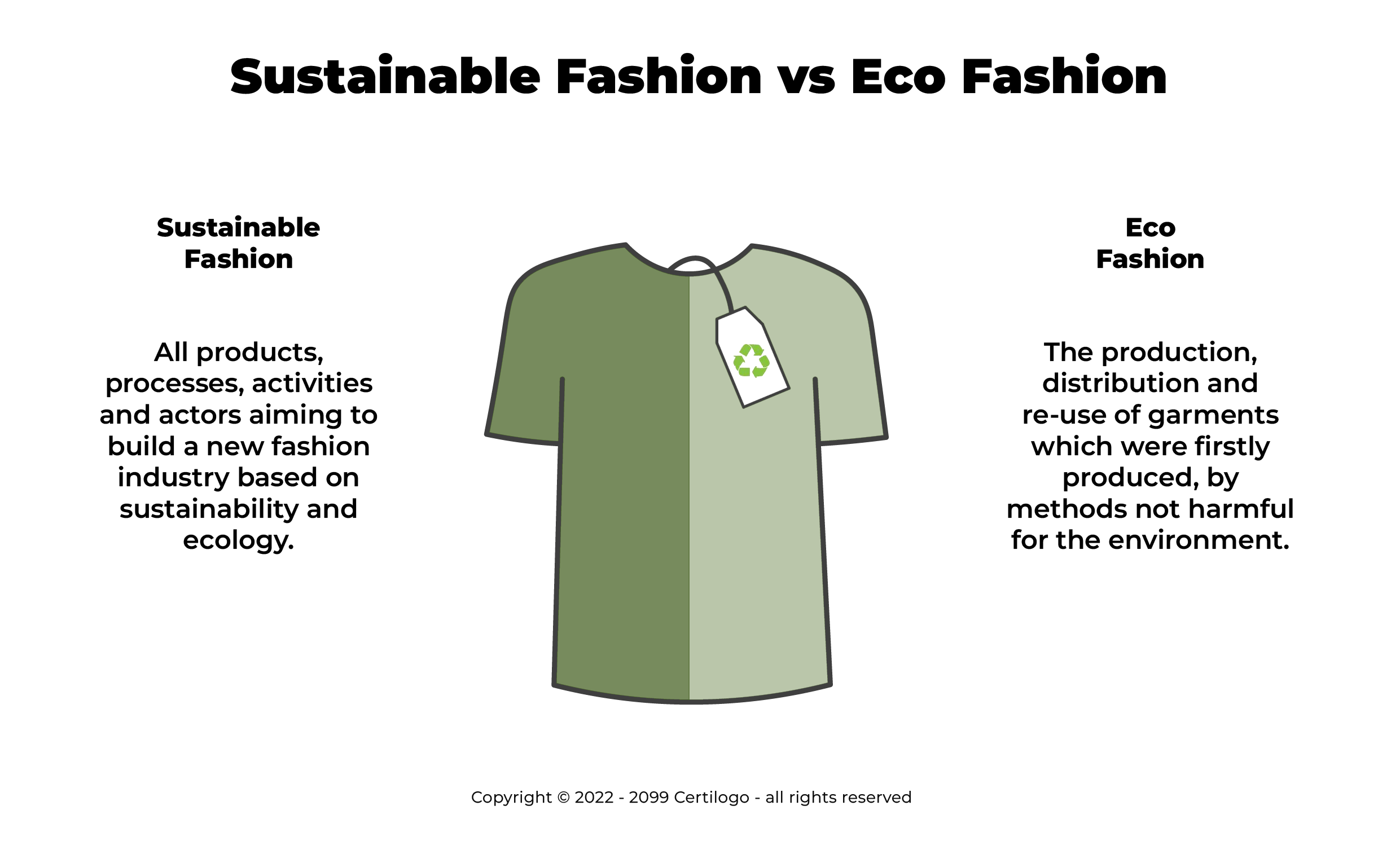Checking out the Rise of Cape Town Sustainable Fashion Brands
Wiki Article
Keep Ahead of the Curve by Checking Out Innovative Style Trends
In an industry as dynamic as style, remaining ahead involves more than just complying with existing fads-- it demands an expedition of innovation. Smart textiles, as an example, are changing garments right into useful masterpieces, while 3D printing is changing design processes with its personalized, waste-reducing capabilities. As sustainability ends up being a cornerstone, innovations like green materials and round fashion practices are reshaping environmental obligation - Cape Town Sustainable Fashion. Furthermore, the convergence of innovation and style advertises a new period of consumer involvement. How, after that, can these arising fads redefine the future of fashion, and what implications do they hold for brands seeking to prosper in this evolving landscape?
Welcoming Smart Textiles
In recent times, the apparel industry has actually observed a transformative shift with the integration of smart textiles, a sophisticated innovation that blends innovation with material. This evolution stands for not just a fusion of aesthetic appeals and performance yet likewise a significant leap towards sustainability and customization in fashion. Smart textiles, additionally understood as e-textiles, installed sophisticated electronic devices such as sensing units and conductive strings within the material, making it possible for garments to interact with the environment or the user.These textiles are made to keep an eye on physical specifications, such as heart price or body temperature, providing real-time health and wellness analytics. Beyond health and wellness applications, wise fabrics are also being utilized for adaptive clothing, which can transform shade or pattern in action to environmental stimulations, hence offering a dynamic fashion experience.
In addition, the advancement of energy-harvesting textiles that generate power from activity or sunshine is leading the way for self-sufficient wearable technology. This advancement is appealing to ecologically aware customers and designers aiming to lower the ecological impact of fashion. As r & d in this area advancement, smart fabrics are expected to end up being increasingly common, improving the landscape of modern-day fashion with their multifunctional capacities.
The Surge of 3D Printing
Revolutionizing the manufacturing landscape, 3D printing has arised as a game-changer in the apparel industry. This cutting-edge technology has enabled designers to press the borders of imagination, creating elaborate and customized garments that were previously unimaginable. By leveraging electronic style and additive manufacturing, 3D printing facilitates the production of complex geometries and patterns, allowing designers to experiment with brand-new textures and structures.A significant advantage of 3D printing in style is its capacity to create on-demand, minimizing waste and lowering stock requirements. This effectiveness not only enhances production processes however additionally enables quick prototyping, making it possible for designers to bring their visions to life in a much shorter timeframe. Furthermore, 3D printing sustains personalization somewhat unmatched by typical approaches, supplying personalized fits and one-of-a-kind layouts customized to private customer choices.
The increase of 3D printing has actually likewise equalized fashion, making it available to arising developers that can now make top notch pieces without significant monetary investment in standard production facilities. As modern technology proceeds to development, the garment industry is positioned to harness the full capacity of 3D printing, exploring new materials and techniques that will unquestionably redefine just how style is conceived and generated.
Sustainable Fashion Innovations
As the fashion business grapples with journalism requirement for environmental duty, lasting style advancements have actually arised at the leading edge of transformative modification. The expanding awareness of eco-friendly effect has actually fueled a shift in the direction of even more eco-conscious practices and materials. Brand names and developers are now prioritizing sustainability, including techniques that lessen waste and decrease carbon impacts.One considerable development is the increase of round fashion, which emphasizes recycling and upcycling to extend the lifecycle of garments. This strategy not just reduces waste yet additionally motivates customers to adopt an extra mindful strategy to garments consumption.
from this source One more innovation hinges on the fostering of ingenious dyeing strategies that use waterless processes or natural dyes, thereby lowering the large quantities of water and chemicals commonly utilized in fabric dyeing. Additionally, advancements in biotechnology have actually led to the creation of lab-grown natural leather and textiles, offering environmentally friendly and cruelty-free choices to conventional products. Via these pioneering efforts, the apparel industry is visit here making significant strides towards an extra lasting future.

Tech-Integrated Clothing
Tech-integrated apparel stands for an innovative fusion of fashion and technology, improving exactly how people engage with their clothing. This ingenious domain is noted by the addition of smart textiles and embedded electronic parts, boosting both performance and aesthetic charm. From fitness trackers embedded in sports apparel to heated coats managed using smart device applications, tech-integrated clothing provides customers unprecedented benefit and adaptability.Pioneering brands are driving this pattern, concentrating on producing garments that reply to ecological stimuli or individual commands. For instance, some garments can alter shade or pattern in response to temperature shifts, while others integrate biometric sensing units to monitor wellness metrics like heart price or stress and anxiety degrees. The smooth assimilation of innovation into fabrics likewise encompasses environmental sustainability, with initiatives to establish self-cleaning textiles or garments that get used to weather conditions, therefore minimizing the requirement for multiple layers.
Moreover, the introduction of wearable modern technology is not just limited to garments but encompasses devices like watches and eyeglasses, additional widening the scope of tech-integrated fashion. As the market continues to innovate, the possibility for modification and customization in clothing grows, supplying customers unique, tech-enhanced style experiences that cater to their specific needs and preferences.
Future of Virtual Fashion
In the last few years, the future of digital fashion has actually arised as a transformative pressure within the industry, leveraging innovations in digital innovation to redefine how style is produced, experienced, and taken in. By incorporating increased truth (AR), virtual truth (VIRTUAL REALITY), and 3D layout tools, designers can currently craft interactive and immersive experiences that go beyond conventional style borders. Digital fashion enables the creation of garments that exist only in electronic atmospheres, supplying countless possibilities for development without the limitations of physical manufacturing.This electronic shift not just provides opportunities for creative expression yet also addresses sustainability issues intrinsic in standard style methods. Cape Town Sustainable Fashion. By removing the requirement for physical sources, online style reduces waste and reduces carbon footprints. Moreover, the increase of online fashion lines up with the increasing customer need for unique and individualized experiences, as digital garments can be customized and tailored to specific choices with ease

Final Thought
The fashion market's future lies in the integration of ingenious technologies and sustainable practices. Digital style is poised to redefine consumer interactions.In recent years, the fashion market has observed a transformative change click here for more info with the assimilation of smart fabrics, an advanced advancement that blends innovation with textile.As the fashion sector grapples with the pressing requirement for environmental duty, sustainable style advancements have arised at the forefront of transformative change.In recent years, the future of digital fashion has emerged as a transformative pressure within the market, leveraging developments in digital modern technology to redefine how style is developed, experienced, and eaten. The rise of virtual fashion lines up with the enhancing customer need for tailored and distinct experiences, as online garments can be tailored and tailored to private choices with ease.
The fashion market's future lies in the combination of lasting methods and innovative technologies.
Report this wiki page